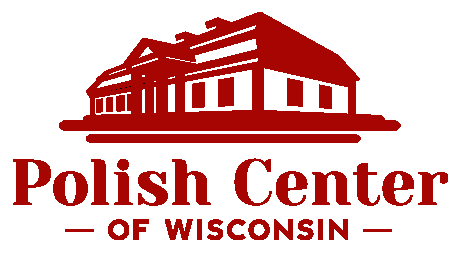Newsletter
2024 Wianki Festival
Polish American Congress – WI Division,Polanki, Polish Heritage Alliance
and Polish Heritage Club of Wisconsin, Madison cordially invite all to:
Polish midsummer celebration
known also as Kupała Night, Sobótka,
or Noc Świętojańska (St. John’s Night)
WHEN: June 26, 2024 at 7 pm
Wianki workshop 5:00 – 6:30 pm
WHERE: The front lawn and pond at the
Polish Center of Wisconsin
6941 S. 68th Street, Franklin, WI 53132
Bring your family & friends and get ready to
place flower wreaths (wianki) on the water,
take part in Wianki Competition and join
the hunt for the mythical fern flower.
For the most festive experience, wear white dress/shirt or show off your Polish folk costume. Also, bring some candles to give a special glow to your wreath floating on the water.
Reminder: Both events are now rescheduled for June 26.
Make wianki yourself using either silk flowers or flowers and greenery from your garden. You can also bring the wreaths bought at the Polish Fest or other Polish events but only self-made wreaths will be eligible to enter the Wianki Contest.
Need help with making your wreath?
Take the 1.5-hour workshop starting at 5:00 pm.
Fee is $10 per person, free for all younger than 18.
REGISTRATION REQUIRED
To register, send an email to pacwisconsin@gmail.com.
Inclue name and age for each participant.
A limited number of wreaths will be available
for purchase at the event.
 Hungry for Polish Food?The Polish Café will be open from 4pm to 7pm.
Hungry for Polish Food?The Polish Café will be open from 4pm to 7pm.
Here is what’s on the menu for Wednesday, June 26
2024 Polish Constitution Day in Wisconsin
Celebrating
Poland’s 1791 Constitution
Through Words, Music and Imagery
Polish Center of Wisconsin
May 2nd, 2024 at 7pm
A Word of Welcome
by CoryAnn St. Marie-Carls
‘The May Third Constitution:
A Remarkable Story’
by Donald Pienkos
Prof. Emeritus of Political Science
Celebrating the May Third Constitution in Song
by Bernadette Swider and Julian Kosacki
accompanied by John Pienkos
A Wine and Cheese Reception, socializing
and viewing the Exhibit Of Polish Constitution Panels follows
This free event is sponsored by the Milwaukee Society of the Polish National Alliance in cooperation with the Polish Center of Wisconsin and support of the Polish American Congress – Wisconsin Division.
Hosted in the Polish Center of Wisconsin
6941 S. 68th Street Franklin, WI 53132-8237
► Map of Location ◄
From the 1999 Senate Joint Resolution 11: Whereas, the democratic and Western−oriented ideals inherent in the first Polish Constitution live on today within a citizenry that has played a leading role in bringing an end to Communism in Eastern Europe and in the country that was the Soviet Union and whose elected representatives are presently at work building a new societal system based on the precepts of political liberty linked in spirit to Poland’s historic values as embodied in the Polish Constitution of 1791; now, therefore, be it Resolved by the senate, the assembly concurring, That the legislature of the state of Wisconsin recognizes the contribution of the Polish Constitution to the advancement of democracy and freedom by proclaiming May 3rd of every year, “Trzeciego Maja Day” in the state of Wisconsin and invites all citizens to join their fellow Wisconsinites of Polish descent in celebrating Polish Constitution Day, “Trzeciego Maja”.
Archived Posts
- 80th Anniversary of the 1944 Warsaw Uprising
- 2024 Wianki Festival
- 2024 Polish Constitution Day in Wisconsin
- 2023 Merry Christmas
- 2023 Lighting the Light of Freedom on Dec 13 at 7:30pm
- Independence Day and Veteran Day invitation
- 2023 Wianki Festival
- 2023 May 3rd Constitution Day Celebration
- 2023 Lecture on Polish Borders by Prof. Don Pienkos
- 2023 REMEMBER THIS: Jan Karski movie premieres on PBS Wisconsin
- 2023 Upcoming lectures in the Polish Center of Wisconsin
- 2022 Polish National Independence Day
- 2022 Independence and Veteran Day Luncheon (invitation)
- 2022 Wianki, Polish Celebration of Noc Świętojańska (St. John’s Night)
- Celebrating Constitution of May 3, 1791 in Polish Center of Wisconsin
- 2022 Polish Constitution Day, Polish Flag Day and the Day of Polonia
- 2022 March Bulletin
- 2022 Polonia For Ukraine Donations
- 2022 Polish American Congress Condemns Russian Invasion of Ukraine
- 2022 PAC-WI State Division Letters to WI Senators and Representatives
- 2021 Polish Christmas Carols
- 2021 Panel Discussion: Martial Law in Poland 1981-1983 (REPORT)
- 2021 Panel Discussion: Martial Law. Poland 1981-1983 (invitation)
- 2021 Solidarity: Underground Publishing and Martial Law 1981-1983
- 2021 Polish Independence Day and Veterans Day
- 2021 Polish Independence Day and Veterans Day Luncheon
- 2021 Prof. Pienkos lecture: Polish Vote in US Presidential Elections
- 2021 POLISH HERITAGE MONTH EVENTS
- 2021 “Freedom” Monument Unveiled in Stevens Point, Wisconsin
- 2021 PCW Picnic and Fair
- 2021 Remembering Września Children Strikes (1901-1903)
- 2021 May 3 Constitution Day
- 2021 DYKP Contest Winners and Answers
- 2021 DYKP CONTEST EXTENDED and CASIMIR PULASKI DAY
- 2021 February announcements
- 2021 Polish Ministry of Education and Science oficials visit Wisconsin
- 2021 DYKP Contest, KF Gallery and Dr. Pease lectures
- 2020 Help Enact Resolution commemorating the 80th Anniversary of the Katyn Massacre
- 2020 Independence And Veterans Day
- 2020 Remembering Paderewski
- 2020 POLISH HERITAGE MONTH
- 2020 Solidarity born 40 years ago
- 2020 Battle of Warsaw Centenary
- 2020 The Warsaw Rising Remembrance
- 2020 June/July News: Polish Elections, Polish Films Online and more
- 2020 Poland: Virtual Tours
- Centennial of John Paul II’s Birth
- 2020 Celebrating Polish Flag, Polonia and Constitution of May 3rd
- 2020 Polish Easter Traditions
- 2020 Census and Annual Election
- Flavor of Poland (Update 3)
- 2020 Copernicus, Banach & Enigma talk
- 2020 Do You Know Poland and other announcements
- 2020 Flavor of Poland (Update 2)
- 2020 People and Events of the Year
- 2019 Holidays
- 2019 December Medley
- 2019 Independence Celebration
- 2019 Independence Invitation






